This article has been reviewed according to Science X's editorial process and policies. Editors have highlighted the following attributes while ensuring the content's credibility:
fact-checked
trusted source
proofread
EPA testing shows the power of D-I-Y air filters to trap viruses
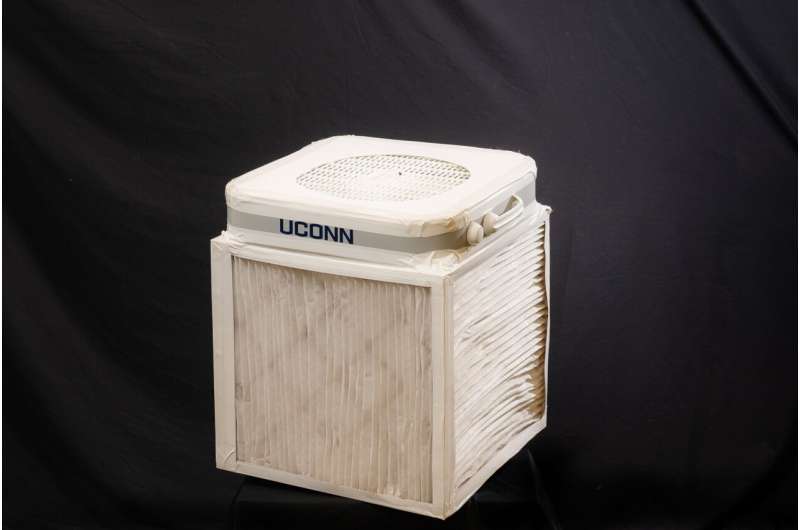
There is a low-cost way for you to protect yourself and reduce your risk of respiratory diseases such as flu, RSV, and COVID-19. Build yourself a Corsi-Rosenthal box (CR box) in 30 minutes with just $60 worth of common hardware store supplies.
In July, U.S. Environmental Protection Agency scientists began several weeks of advanced bioaerosol chamber testing to assess the efficacy and power of this air filter against infectious aerosols, like the virus that causes COVID-19. The results are in, and they are good.
The U.S. EPA Office of Research and Development's 3,000 cubic ft. bioaerosol chamber testing results show that the CR box removes 97% of infectious aerosols in just 30 minutes, and 99.4% within 60 minutes. Importantly, the device successfully captures a surrogate virus for SARS-CoV-2, the virus that causes COVID-19.
A team of EPA scientists led by Katherine Ratliff conducted the bioaerosol chamber testing of the CR box after testing more expensive air cleaning technologies throughout the pandemic.
"The study results are extremely exciting," says EPA's Ratliff. "These CR boxes really work. The Corsi-Rosenthal box works against infectious aerosols in the air. The results are really powerful. Three different sets of biochamber testing data show that these air filters reduce the amount of infectious virus in the air and capture both smaller and larger sized particles. CR boxes are more effective at reducing concentrations of infectious aerosols in indoor air than some of the more expensive technologies that we tested."
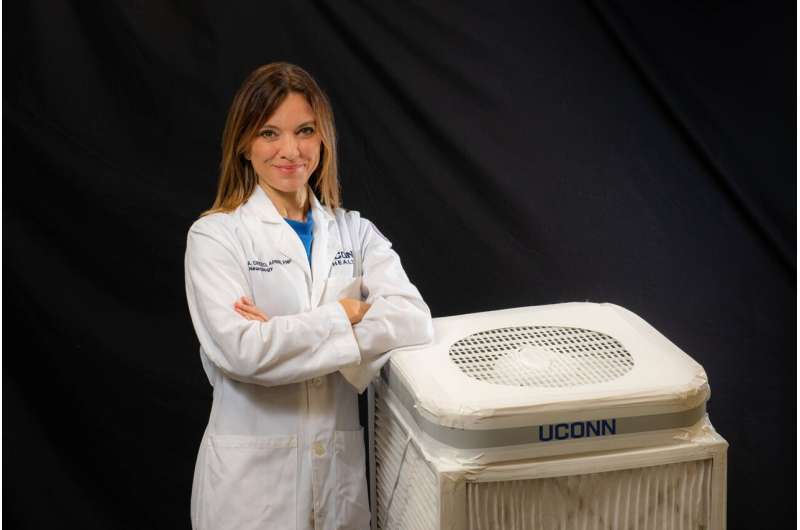
"These scientific results are huge," says Marina Creed, APRN, director of the UConn Indoor Air Quality Initiative. "These inexpensive, do-it-yourself air filters are for everyone. If you put this in your home, it will remove infectious germs that cause disease from the air. Schools, students, and teachers if you run one of these inside your classrooms it can reduce your exposure to viruses and bacteria, reducing the risk of disease transmission, meaning you are less likely to get sick."
Interestingly, the CR box tested by the EPA, known as "Owl Force One," was built, named, and decorated this spring by a then nine-year-old fifth grader and her classmates with members of the UConn Indoor Air Quality Initiative at Macdonough Elementary School in Middletown, Connecticut.
The device, decorated as the school's owl mascot, was driven in July 2023 on a road trip from Connecticut by UConn researchers to the EPA's Office of Research and Development in Research Triangle Park, North Carolina for the advanced testing. The road trip to the EPA was sparked by then fifth grader, Eniola Shokunbi, nine, now a six-grader, from Middletown who wrote and mailed UConn a letter inviting them to her public school to help her class build the air cleaner and perform experiments.
Creed's Initiative co-collaborators are Kristina Wagstrom, Ph.D. of UConn School of Engineering, and Misti Zamora, Ph.D. of UConn School of Medicine.
For over two years the UConn team has been building and donating hundreds of these air filters to the Connecticut community, including the state's public schools, to fight COVID-19 in classrooms while conducting real world testing of the powers of the DIY air cleaners inside schools and other community settings. The researchers have submitted a manuscript for peer review to further build upon the EPA's testing results.
In June UConn Health donated 150 free CR boxes to vulnerable members of the community to protect them from the dangers of wildfire smoke particles in the air. Also, as a public service, UConn has donated materials and STEM lesson plans for 100 air filters to the Connecticut Education Association for schools and teachers in need of immediately improved indoor air quality this cold and flu season.
You can learn how to build your own simple, affordable DIY air cleaner with UConn's simple online directions whether for your home, your classroom, or community setting. Also, view a how-to video by UConn School of Engineering students.
-

After a long road trip from Connecticut to North Carolina, the owl landed. 'Owl Force One' arrived to the EPA on July 26, 2023 for testing in the agency's 3,000 cubic ft. bioaerosol test chamber. Credit: UConn/Marina Creed -
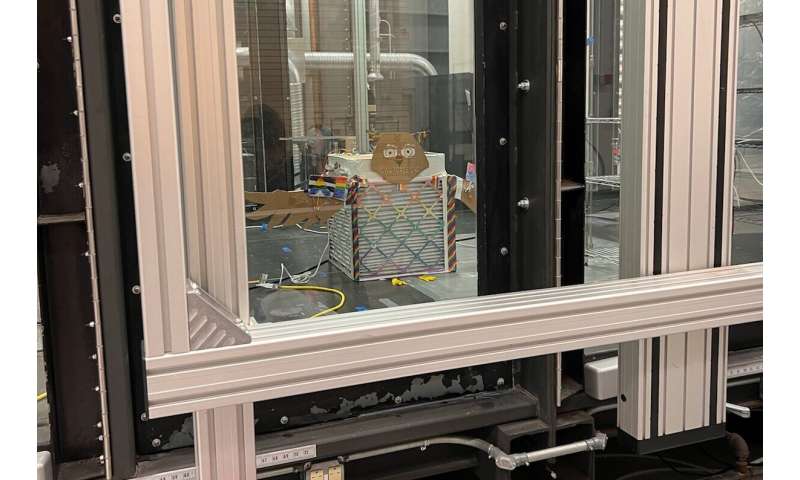
'Owl Force One' at the EPA on July 26, 2023 started being testing in the agency's large bioaerosol test chamber. Credit: UConn -
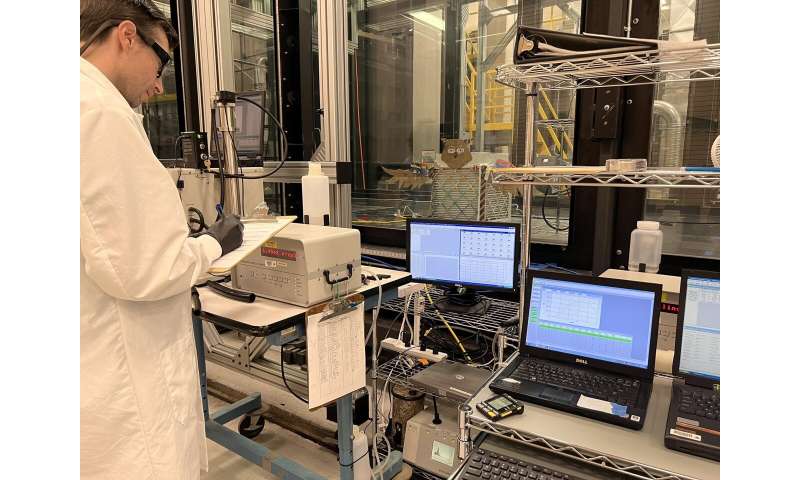
The D-I-Y Corsi-Rosenthal air filter being tested by EPA scientists. Credit: UConn -
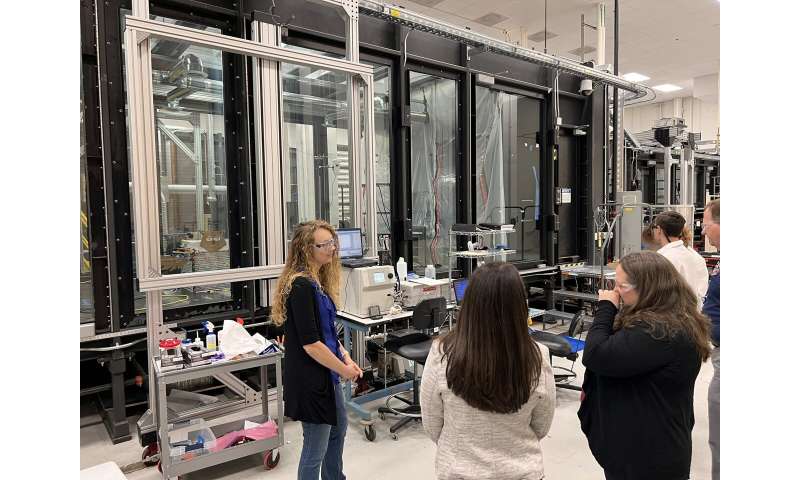
'Owl Force One' undergoing advanced biochamber testing by the EPA. Credit: UConn
The filtration systems are named for their creators, Dr. Richard Corsi, dean of engineering at the University of California-Davis, and Jim Rosenthal, CEO of Texas-based company Tex-Air Filters.
The UConn Indoor Air Quality Initiative's cross-campus collaborators include: UConn Health and its Comprehensive Multiple Sclerosis Center, UConn School of Medicine and its Department of Public Health Sciences, UConn School of Engineering, UConn School of Nursing, Connecticut Area Health Education Center Network (CT AHEC), UConn Neag School of Education, and Connecticut Children's.





















